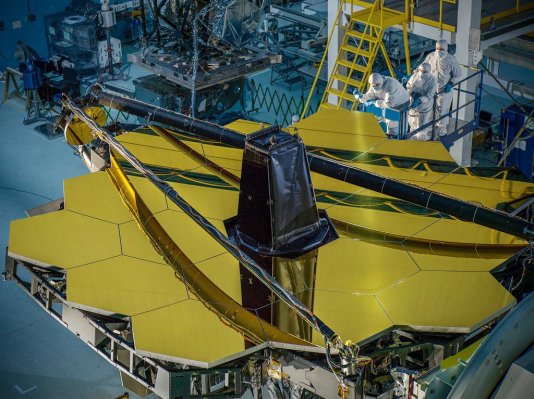NASA announced yesterday that its highly anticipated James Webb Space Telescope is delaying its launch — again.
It was announced in March that the mission would be delayed until 2020, which is already two years past its original launch date of October 2018. But after accepting the recommendations of an independent review board, NASA has announced that the launch has been rescheduled for early 2021.
According to the report, technical issues and human error have “greatly impacted the development schedule” and added $800 million to the already $8 billion budget approved by Congress.
For a mission that’s been deemed NASA’s “next big telescope,” it’s not surprising there’d be a few bumps in the road.
The telescope’s honeycombed structure of (literally) gold-plated mirrors will help scientists see further into the history of our universe than has ever been possible before. Following in the footsteps of the Hubble Telescope, Webb will have improved “sight” thanks to its abilities to see longer wavelengths, like infrared. By peering beyond the visible spectrum of light, there’s literally no telling what Webb might learn about the birth of the universe. And that’s kind of the reason NASA’s building it.
“The more we learn more about our universe, the more we realize that Webb is critical to answering questions we didn’t even know how to ask when the spacecraft was first designed,” said Thomas Zurbuchen, associate administrator for NASA’s Science Mission Directorate, in a report yesterday.
If that’s not enough pressure, the Webb (unlike the Hubble) will be too far away from Earth to be serviceable by either manned or robotic missions. So, when Webb finally reaches its orbit and unfurls (another tricky maneuver), there’s no going back.
While this mission represents an exciting new opportunity to explore deeper into space, NASA and other federally funded space agencies aren’t the only game in town any more. Billionaires like Yuri Milner, Jeff Bezos and Elon Musk are taking on the challenge in the private sector and designing new methods, crafts and rockets to explore this final frontier with a little more flexibility than NASA.
In addition to the obvious technical challenges of the Webb project, NASA has also run into problems with its primary contractor, Northrop Grumman. After encountering problems earlier this year successfully installing Webb’s sun shield, Northrop Grumman was also cited in yesterday’s report for “performance challenges” on the mission’s propulsion systems.
With NASA’s growing to-do list before Webb finally launches, it might still be awhile before we get to see the universe’s baby pictures.
